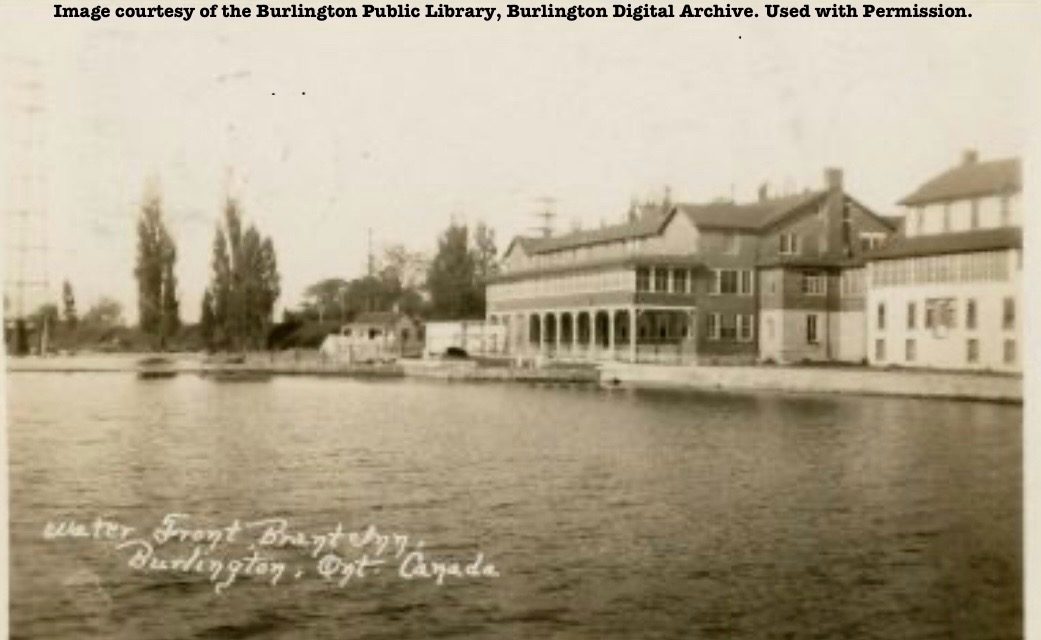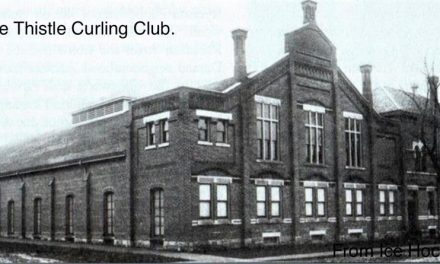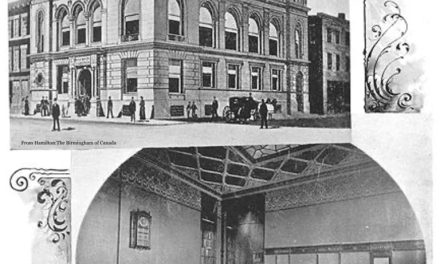By Brian Roulston
When Col. Alexander Brown and his son Alexander Jr. established their wharf at present-day LaSalle Park, it brought profound changes to the quaint village of Wellington Square, now Burlington. Initially serving merchant vessels, the wharf welcomed passenger steamboats from Hamilton, the beginning of a significant transformation.
Burlington’s progression into a tourist destination began when William Applegarth Jr., built a 26-room, two-story mansion. Later, the mansion was transformed into a large tavern called Victoria Pleasure Grounds, with a grand ballroom, and luxurious rooms. Against centuries-old oak trees and a flat beach meeting Burlington Bay, the tavern became a place of laughter and serenity, attracting Hamilton’s elite during the 1830s and 1840s.
As Hamilton industry developed about the 1860s, garbage and industrial waste pollution impacted recreational activities along Hamilton’s shoreline. The advent of steamers without paddlewheels transformed trade and travel on the Great Lakes and Hamilton Bay. They quickly became essential for shoreline communities, ushering in unprecedented development. Initially, it was mainly the wealthy who could afford trips. Working-class residents continued to use Hamilton’s beaches.
In 1878, Victoria Pleasure Grounds was rebranded Oakland Pleasure Grounds where Hamiltonians attended summer picnics organized by workplaces or churches. Oaklands also offered non-alcoholic drinks, wine, lager beer, free lunch, and bowling in a newly built alley.
In the mid-to-late 1870s Hamilton’s population gained disposable income and a desire for leisure travel. The Hamilton Steamboat Company dominated the bay with steamers like the MAZEPPA, MACASSA, and MODJESCA. This company and others recognized the growing demand. They began operating multiple daily trips across the bay to Toronto, Grimsby, Port Dalhousie, and Brown’s Wharf (LaSalle Park).
By 1902, Burlington was a bustling summer resort, offering cottages, camping, and boating. This lasted for decades and shaped the town’s future. Hamilton Radial Rail Lines were introduced during this time, making travel to Burlington easier. A trip from Hamilton cost twenty-five cents for a day at the beach.
In 1903, Mr. H. Knapman established the Canadian Amusement Company creating an amusement park on the beach near today’s Burlington Skyway with boat houses, swings, and snack bars and eventually carousels, pony rides, and a miniature Ferris wheel. By the 1950s, there was also a small roller coaster from a closed amusement park near Buffalo. The Pier Ballroom hosted Saturday night dances and Sunday talent contests featuring local and international artists.
Burlington became well-known because of The Brant House, originally the home of Chief Joseph Brant. Later owned by William Hendrie, the building served as a family home until 1899, when Alfred B. Coleman, owner of A.B. Planing Mill & Lumber Company on Hughson St. South, bought it. He built the Brant Hotel, with 300 guest rooms for $100,000. The hotel was unique with an 8,000 square foot rooftop dining room, beautiful gardens. and modern conveniences such as private and public washrooms with hot and cold running water, electricity, heating, and even an elevator! These features were relatively rare in Canadian hotels. A room cost $2.50 per night. The property also included picnic areas and a bandstand.
In 1917, during WW1, the federal government expropriated the Brant and turned it into a military hospital with all the patient amenities, including operating rooms for injured and sick soldiers. The large verandas were boarded up and made into wards, the guest rooms became hospital rooms. Shut down after the war the building remained empty for some time. Unfortunately, due to vandalism, the hospital caught fire, and its interior was gutted.
Because Wentworth was a dry county, A.B. bought property across from the hotel fronting Lake Ontario and built his “Country Club,” a gentleman’s club where guests could smoke, drink, play cards, and swim. Coleman would eventually turn his Country Club into a new hotel called the Brant Inn after World War I. In 1925, the hotel caught fire. There are two versions of how the fire began.
The first version was on a cold February day. The wind was blowing in off the lake, and Murray Anderson decided to open the main dining room, which was unusual as it was never opened in the dead of winter. An employee fired up the fireplace, so it was nice and comfortable. Two diners smelled smoke and told Murray. He sent an employee to the basement to check it out. The employee returned and told them the place was on fire. The chimney hadn’t been cleaned out, and the fire started there.
The 2nd version involved a coal-fired train climbing the steep incline beside the inn. The engineer stoked the boiler. Thick, black smoke billowed from the smokestacks, a stray cinder landed on the inn’s roof, igniting the dry timber. Hotel employees attempted to extinguish the fire using garden hoses, but their efforts were unsuccessful. Rebuilt in brick the following year, a Hamilton restaurateur, a man named Kendall and Murray Anderson, rented the hotel until 1938 when Kendall and Anderson bought the inn.
Before World War 2, Brant Inn borrowed a popular idea from a Havana nightclub. A terrace with a revolving dance floor seating 1700 guests became so popular that some paid $20 per person, then a considerable sum, to dance to Eddie Duchin’s music. The Brant Inn, in a small town with about 4,000 residents, became North America’s most popular and famous nightclub in the 1940s and 1950s, outdoing nightclubs in Miami, New York, and Havana. Top performers including Liberace, Louis Armstrong, Ella Fitzgerald, Johnny Mathis, Andy Williams, and Lena Horne. And big bands such as Count Basie Orchestra, Benny Goodman, Guy Lombardo and the Dorsey brothers performed and delighted audiences. They drew large crowds of people from Toronto, Hamilton, Guelph, Kitchener, and Galt and from places like Upper New York State, Tennessee, and the Carolinas. Burlington was easy to get to by water, had a friendly atmosphere, beautiful shorelines, and great boating opportunities. It was an excellent place for adventure and relaxation. On a memorable summer evening, Stan Kenton, a famous jazz bandleader, pianist, and composer with a creative music style performed for 1,600.
Paul Hanover, CHML radio host called the “Mayor of the Morning,” started his popular radio show, “Meet Me at the Brant” in 1946. It was broadcast live across Canada from the Brant Inn and featured performances and interviews with many of the famous visiting entertainers.
Wabasso (once Victoria, then Oakland and now LaSalle) Park declined slowly from the late 1930s. Water pollution from Hamilton finally made its way across the bay, affecting water quality and making swimming unappealing. Increasing car ownership encouraged people to explore more distant destinations. The Great Depression in the 1930s also contributed to the decrease in visitors. By 1947, the amusement park had closed but the area continued to be utilized for picnics, athletic competitions and sunbathing.
Meanwhile, Brant Inn declined as rock ‘n’ roll changed taste in music. Toronto started multiple clubs and performers became too expensive for Brant’s budget. Murray, the heart of Brant’s music scene, was also slow to adapt.
The Brant packed them in for one final time on New Year’s Eve 1968. The Brant Hotel, the pride of Burlington and the city’s glory days as a tourist mecca was demolished in 1969 to make way for the Joseph Brant Memorial Hospital, marking the end of an era.





